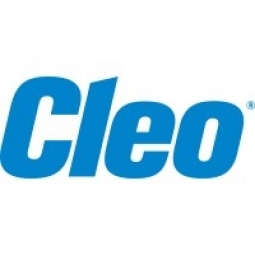公司规模
Large Corporate
地区
- America
- Others
国家
- United States
- Worldwide
产品
- EXTOL EDI Integrator for I (EEI)
技术栈
- EDI
实施规模
- Enterprise-wide Deployment
影响指标
- Cost Savings
- Productivity Improvements
技术
- 应用基础设施与中间件 - 数据交换与集成
适用行业
- 食品与饮料
适用功能
- 物流运输
用例
- 供应链可见性(SCV)
服务
- 系统集成
关于客户
Krispy Kreme 是一家知名的甜甜圈和咖啡连锁店,已有 70 多年的历史。该公司经营着 773 家门店,自 2000 年以来已扩展到全球 22 个国家。Krispy Kreme 以其独特的甜甜圈和其他烘焙食品系列而闻名。该公司的业务模式是每 2 到 4 小时向其门店运送新鲜出炉的食品,这对物流提出了巨大的挑战。
挑战
Krispy Kreme 是一家全球甜甜圈和咖啡连锁店,其供应链运营面临巨大挑战。该公司需要每 2 到 4 小时向数百家商店运送数百万份新鲜出炉的食品。挑战在于快速且经济高效地完成这项工作。该公司的重点是通过更好地管理大量数据交易来改善其供应链运营。
解决方案
为了应对供应链挑战,Krispy Kreme 实施了 EXTOL EDI Integrator for I (EEI)。该解决方案使该公司能够处理更大的交易量,使其能够更有效地管理其大量数据交易。EXTOL EDI Integrator 还提供了主动警报和通知的例外规则,使 Krispy Kreme 能够快速响应供应链中的任何问题。此外,该解决方案使 Krispy Kreme 能够更快地加入更多贸易伙伴,从而进一步增强其供应链运营。
运营影响
数量效益

Case Study missing?
Start adding your own!
Register with your work email and create a new case study profile for your business.
相关案例.

Case Study
The Kellogg Company
Kellogg keeps a close eye on its trade spend, analyzing large volumes of data and running complex simulations to predict which promotional activities will be the most effective. Kellogg needed to decrease the trade spend but its traditional relational database on premises could not keep up with the pace of demand.

Case Study
HEINEKEN Uses the Cloud to Reach 10.5 Million Consumers
For 2012 campaign, the Bond promotion, it planned to launch the campaign at the same time everywhere on the planet. That created unprecedented challenges for HEINEKEN—nowhere more so than in its technology operation. The primary digital content for the campaign was a 100-megabyte movie that had to play flawlessly for millions of viewers worldwide. After all, Bond never fails. No one was going to tolerate a technology failure that might bruise his brand.Previously, HEINEKEN had supported digital media at its outsourced datacenter. But that datacenter lacked the computing resources HEINEKEN needed, and building them—especially to support peak traffic that would total millions of simultaneous hits—would have been both time-consuming and expensive. Nor would it have provided the geographic reach that HEINEKEN needed to minimize latency worldwide.

Case Study
Energy Management System at Sugar Industry
The company wanted to use the information from the system to claim under the renewable energy certificate scheme. The benefit to the company under the renewable energy certificates is Rs 75 million a year. To enable the above, an end-to-end solution for load monitoring, consumption monitoring, online data monitoring, automatic meter data acquisition which can be exported to SAP and other applications is required.

Case Study
Coca Cola Swaziland Conco Case Study
Coco Cola Swaziland, South Africa would like to find a solution that would enable the following results: - Reduce energy consumption by 20% in one year. - Formulate a series of strategic initiatives that would enlist the commitment of corporate management and create employee awareness while helping meet departmental targets and investing in tools that assist with energy management. - Formulate a series of tactical initiatives that would optimize energy usage on the shop floor. These would include charging forklifts and running cold rooms only during off-peak periods, running the dust extractors only during working hours and basing lights and air-conditioning on someone’s presence. - Increase visibility into the factory and other processes. - Enable limited, non-intrusive control functions for certain processes.

Case Study
Temperature Monitoring for Restaurant Food Storage
When it came to implementing a solution, Mr. Nesbitt had an idea of what functionality that he wanted. Although not mandated by Health Canada, Mr. Nesbitt wanted to ensure quality control issues met the highest possible standards as part of his commitment to top-of-class food services. This wish list included an easy-to use temperature-monitoring system that could provide a visible display of the temperatures of all of his refrigerators and freezers, including historical information so that he could review the performance of his equipment. It also had to provide alert notification (but email alerts and SMS text message alerts) to alert key staff in the event that a cooling system was exceeding pre-set warning limits.

Case Study
Coca-Cola Refreshments, U.S.
Coca-Cola Refreshments owns and manages Coca-Cola branded refrigerators in retail establishments. Legacy systems were used to locate equipment information by logging onto multiple servers which took up to 8 hours to update information on 30-40 units. The company had no overall visibility into equipment status or maintenance history.







